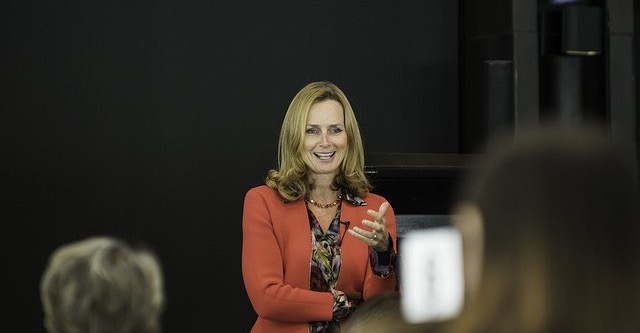
Each person’s journey is different – there is no exact formula. I continued to run my consulting business for nine months after the launch of RedBalloon – taking on client work to fund the growth of the business, working on second-hand computers from home to keep the overheads low, and every dollar went into promoting the business, as did every spare minute.
I remember the moment when it occurred to me that without love and attention this baby was never going to fly. Six months in customers were beginning to purchase (not in great quantities) – but if the phone rang and there was a customer issue often there was no process or system to fix it. Everything was manual and time-consuming. I knew in my heart if the business was ever going to grow it needed systems and processes that meant it was not dependent on individual people. Fewer hands, more systems.
In Shark Tank pitches Steve Baxter has often said “if you want my full-time money then I am going to need your full-time focus”. And he has a point. With other people’s money comes different responsibilities and priorities.
The only way to achieve a business that continues to grow is by focusing on little else – literally by living and breathing your start-up. If you are not planning on building an enterprise, and are happy to be self-employed or have a hobby business, then this is different. Sometimes you might think you are starting a ‘hobby business’ but then if you attract more customers than you can serve it might quickly turn into something else.
Some people have managed to develop a side business while also giving their all to full-time paid employment but long term this is really not sustainable, and ultimately not fair to your employer. The point is to consider when is the right time to give up the security of a pay cheque and the community connection that being part of a business delivers.
Working on your own at startup can be a lonely enterprise too. If you are used to an IT help desk, an expense account and a social corporate culture, starting your own business where you have no one to call for help and have to do everything yourself can be quite confronting. Knowing this beforehand is good – and identifying your support network before going it alone will help.
What will it take to get your idea to begin to have customers? What is the minimum that you can ‘get away with’? Some companies might say that it is producing a prototype or a ‘beta test version’. Really, what is great is if you can spend the least amount of money to produce something that customers can review (or even purchase). This is called minimum viable product (MVP). In other words, ask what you need to invest both time-wise and financially to get your idea or concept to a point where a customer might pay money for it. I’m talking of people you do not know – independent people who are likely to assess the offering based on its functionality, not because it is you that created it. In other words, friends and family don’t count here. They will always tell you what you want to hear because they love you and want to encourage you. You need to know that your MVP is interesting and valuable to complete strangers.
How many people think like you do and believe it is a good idea and worth spending money on? Quite simply put, how big is the market opportunity? Is it a small niche or is it the whole planet? This can be quite hard to assess because our very human nature leads us to believe that the way we view the world is the way everybody views the world.
Now if you know there are a lot of strangers who would pay money for your product, how would you attract them to buy?
Where are these people? Sometimes the cost of attracting customers is more expensive than the profit in the product or what it costs to promote the product is more than a customer is prepared to pay. It sounds obvious, but you would be surprised at how many pitches I have seen where this fundamental question has not been considered.
Plenty of ideas are born every day, but 99% of these don’t make business sense and, unfortunately, not every good idea is a viable idea. Take your time. Work it out. Consider the angles, the customer journey and the cost to get your minimum viable product going.
Naomi Simson is the founding director of Australian online tech success story RedBalloon and Redii. She has written more than 950 blog posts at NaomiSimson.com, is a professional speaker and is one of five “Sharks” on TEN’s business reality show Shark Tank to return in 2016.
This is an excerpt from her latest book, Ready to Soar.


COMMENTS
SmartCompany is committed to hosting lively discussions. Help us keep the conversation useful, interesting and welcoming. We aim to publish comments quickly in the interest of promoting robust conversation, but we’re a small team and we deploy filters to protect against legal risk. Occasionally your comment may be held up while it is being reviewed, but we’re working as fast as we can to keep the conversation rolling.
The SmartCompany comment section is members-only content. Please subscribe to leave a comment.
The SmartCompany comment section is members-only content. Please login to leave a comment.